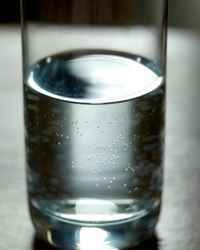"Have you ever seen a commie with a glass of water?"
In the 1964 Stanley Kubrick film "Dr. Strangelove or: How I Learned to Stop Worrying and Love the Bomb," it's a question that leads to a conspiratorial rant about the dangers of water fluoridation.
Advertisement
Almost fifty years later, water fluoridation is still a heated topic of debate. But what do you -- and for that matter, the experts who have been tasked to research it -- know about the actual dangers and benefits of fluoride? The medical and dental establishments by and large play the part of the beleaguered professor, begging people to educate themselves about the benefits fluoridation provides. But that doesn't stop vocal groups from claiming that even if fluoride does have useful properties, the dangers of fluoridation (or over-fluoridation) are far too risky to outweigh the benefits of a pretty smile.
In the following pages, we'll debunk common misperceptions about fluoride -- or lack of fluoride- - and also take a look at the debate that surrounds community water fluoridation, so you can decide for yourself how fluoride affects your body and region. But first, let's look at the things that fluoride is not.







